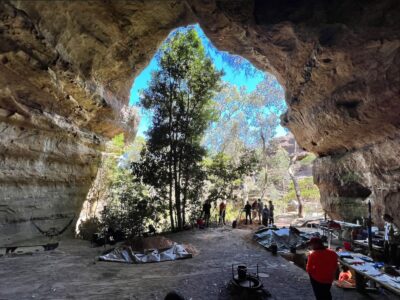Located in the Himalayan Karakoram, Siachen Glacier is one of the largest glaciers outside the polar regions. Since 1984, it’s also been the backdrop of the world’s highest battleground, where war is shaped not only by politics, but also by nature’s forces.
A study published in Small Wars & Insurgencies in February gives detailed insight into the unique and little-known dynamic between Siachen Glacier and Indian-Pakistani military operations in the area. Decades of tense military operations have damaged the powerful yet vulnerable glacier. In turn, Siachen’s harsh conditions have imposed unique constraints on high-altitude warfare.
View this post on Instagram
When Britain hastily ended its imperial occupation of South Asia, the resulting Partition of India in 1947 left unresolved religious conflicts and ill-defined borders between India and Pakistan. While some borders were settled upon, others were left up to dispute. This is the case in Kashmir where the Line of Control, or former ceasefire line, acts as a de facto border. Siachen is located north of Point NJ 9842, the Line of Control’s northernmost agreed-upon point. The ambiguity of the glacier’s location has made it prone to territorial claims by both sides, who consider its possession “a matter of national prestige,” according to the study’s author, Kristin Smith, an independent researcher and journalist.
Smith explains in the study that disputes over Siachen’s territoriality first arose in 1975 when American maps marking the glacier as part of Pakistan provoked sharp backlash from India, who considered the maps “cartographic aggression.” By 1984, the situation had turned violent. The Indian army launched Operation Meghdoot to occupy the glacier and cut off Pakistan from key ridges and passes. Until a ceasefire in 2003, armed conflict continued for nearly 40 years, causing an estimated 2,700 deaths. Battles have not broken out since, but neither have troops from either side withdrawn. While soldiers are no longer at active risk of combat, they still face the dangers of Siachen’s treacherous glacial terrain and harsh climate.

Decades of military operations have damaged the glacier and the surrounding environment. Glacial meltwater from Siachen feeds the Nubra and Shyok rivers, which flow into the upper Indus, an important water source for both India and Pakistan. However, around 2,000 pounds of human waste are dumped into the glacier’s crevasses each day, along with heavy artillery containing toxic metals like lead. This waste has had serious water pollution consequences for downstream human communities and impacted the landscape for vulnerable species, including the endangered snow leopard and Himalayan ibex.
The impacts of glacial warfare are not one-way. As India and Pakistan’s armies have harmed the glacier, Siachen Glacier’s conditions have also constrained military operations. Most glaciers that have been backdrops for war gain most of their mass from seasonal snowfall. However, glaciers in the Karakoram Himalaya, where Siachen is located, gain mass mostly from unexpected avalanches. These conditions pose a potentially fatal challenge for the Indian and Pakistani troops facing this harsh environment year-round.
For the soldiers stationed at Siachen, each day brings a new threat. Even without any enemies in sight, Indian and Pakistani soldiers must be wary of hazardous crevasses every time they venture out, weather out week-long snowstorms and temperatures dropping to -40°C (-40°F), and stay alert to the possibility of deadly avalanches which have been known to flatten outposts. One 2012 avalanche destroyed an entire Pakistani battalion headquarters, killing 129 soldiers and 11 civilians.
The brutal glacial environment has dictated the state of warfare on Siachen Glacier and forced both Indian and Pakistani forces to rethink every move. “It is the greatest factor in the psychology of combat,” wrote Smith in the study, “The first and last consideration for any mission logistics, and the chief determinant of what supplies are available and when, forming a challenging operational environment unlike any other.”

The inaccessibility of supplies in Siachen constrains operations and poses a major risk for deployed troops. The rough terrain of the glacier is inaccessible to even the most durable vehicles, leaving Siachen outposts wholly dependent on pedestrian paths and airlift deliveries. However, avalanches often cut troops off from foot paths, and during snowstorms supply delivery via air may not be possible either. Furthermore, the high elevation of Siachen Glacier exceeds the flight capacity of many of India’s heavier helicopters. For those lighter helicopters that are able to fly on a seemingly clear day, Siachen’s environment is still unpredictable: a sudden strong wind could require an emergency landing, forcing a pilot to avoid numerous deep crevasses marking the glacier’s surface.
Due to frequent isolation as a result of these adverse conditions, periods of strict rationing are a common occurrence in Siachen Glacier’s outposts. Troops must also tie themselves to each other each time they step outside in order to avoid being caught in a storm or falling into a crevasse. In 1992, Indian troops recovered the body of one soldier weeks later after he disappeared “even though he was tied to a rope anchored inside the tent.”
To survive these circumstances, Indian and Pakistani forces rely on specialized training which incorporates ice climbing techniques and avalanche safety. Once at the outpost, soldiers need specific equipment, including gun emplacements and anchor-building equipment, that can withstand the extreme climate. The study explains that due to these additional supplies and training, deployment to Siachen is much lengthier and costly than a typical military deployment. Annual costs of Pakistani operations on Siachen have been estimated to be between $200 and 300 million per year.
As the economic, environmental, and human costs of Pakistan and India’s presence on Siachen Glacier stack up, many citizens question the value of this ongoing military presence. For those of us far from Siachen Glacier, the study provides a window into the consequences that arise from turning a glacier into a space of international conflict.
Correction (March 6, 2021): The original version of this post stated that study author Kristin Smith was a PhD student. She is an independent researcher and journalist.




It was a useful article, thank you